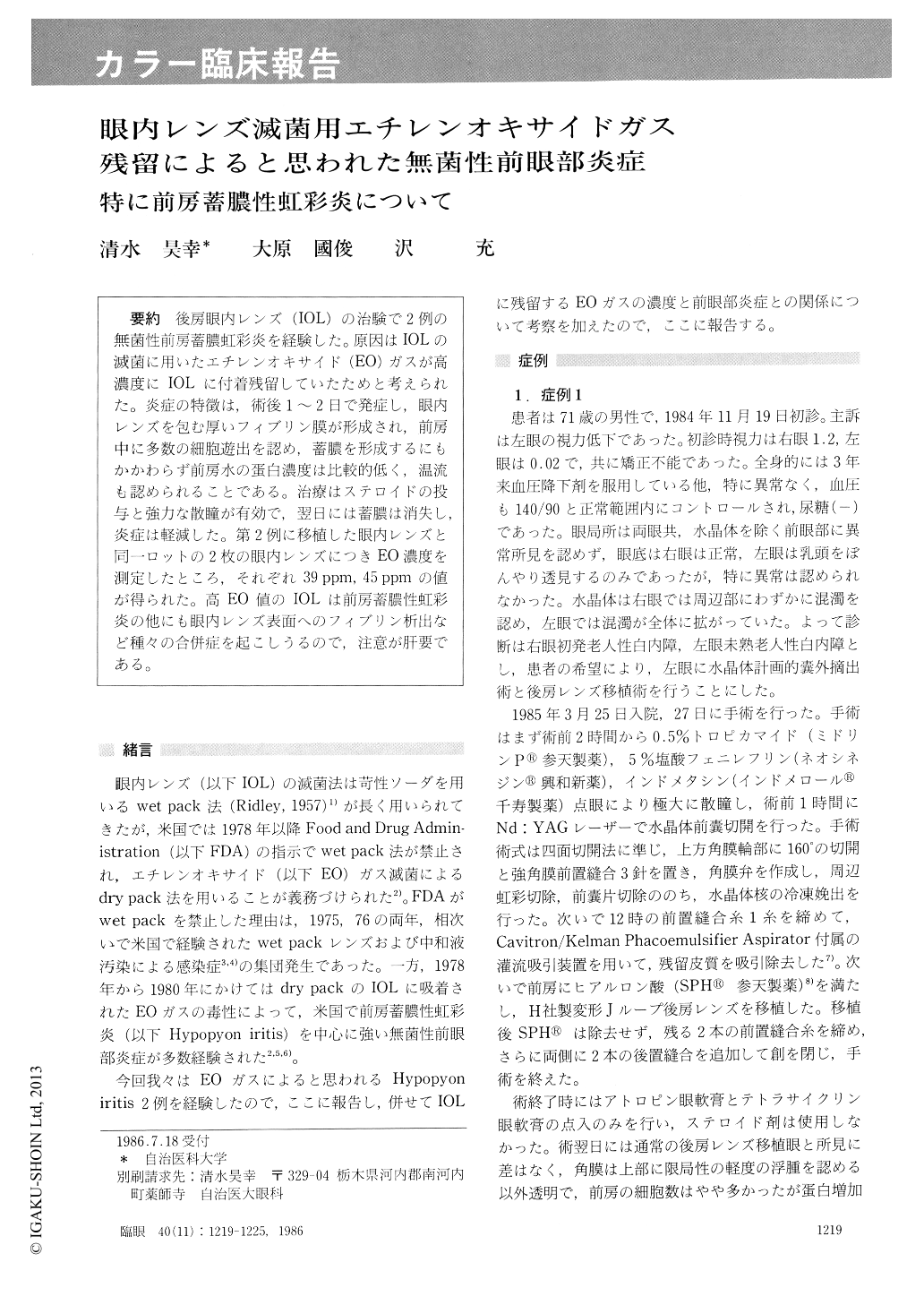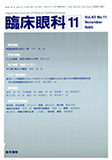Japanese
English
- 有料閲覧
- Abstract 文献概要
- 1ページ目 Look Inside
後房眼内レンズ(IOL)の治験で2例の無菌性前房蓄膿虹彩炎を経験した.原因はIOLの滅菌に用いたエチレンオキサイド(EO)ガスが高濃度にIOLに付着残留していたためと考えられた.炎症の特徴は,術後1〜2日で発症し,眼内レンズを包む厚いフィブリン膜が形成され,前房中に多数の細胞遊出を認め,蓄膿を形成するにもかかわらず前房水の蛋白濃度は比較的低く,温流も認められることである.治療はステロイドの投与と強力な散瞳が有効で,翌日には蓄膿は消失し,炎症は軽減した.第2例に移植した眼内レンズと同一ロットの2枚の眼内レンズにつきEO濃度を測定したところ,それぞれ39ppm,45ppmの値が得られた.高EO値のIOLは前房蓄膿性虹彩炎の他にも眼内レンズ表面へのフィブリン析出など種々の合併症を起こしうるので,注意が肝要である.
During a course of clinical trial of a new, modified J-loop intraocular lens (IOL), we encountered twoinstances of sterile hypopyon tritis. The manufacturer had no previous experience in the production of IOL.
The inflammation occurred one or two days after surgery. Characteristically, there was relatively low aqueous flare and viscosity in spite of a dense fibrin coating of the IOL and massive cells in the anterior chamber resulting in hypopyon. Topical corticosteroid and mydriatics were highly effective and the hypopyon disappeared on the following day.
We measured the ehtylene oxide concentration in 2 IOLs from the same lot as was used for the second case. The value was 38 and 45 ppm each. We then increased the time for airation of the IOL from the presious 5 days to 10 days prior to surgery. After this procedure, the postsurgical inflammations were markedly reduced. Residual ethylen oxide adsorbed to the implanted 10Ls seemed to be responsible factors for the sterile hypopyon iritis in our two cases.
Rinsho Ganka (Jpn J Clin Ophthalmol) 40(11) : 1219-1225, 1986

Copyright © 1986, Igaku-Shoin Ltd. All rights reserved.


